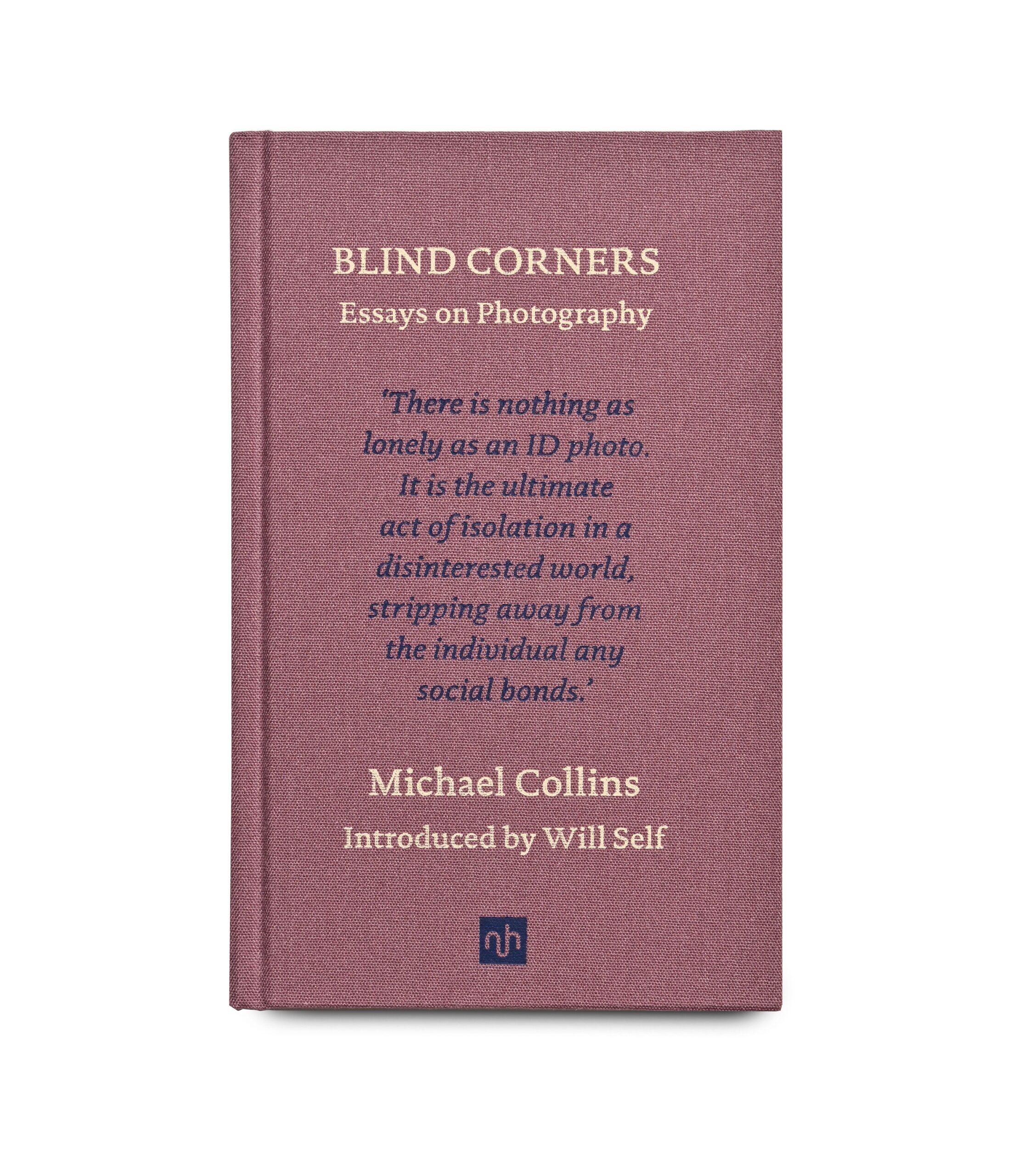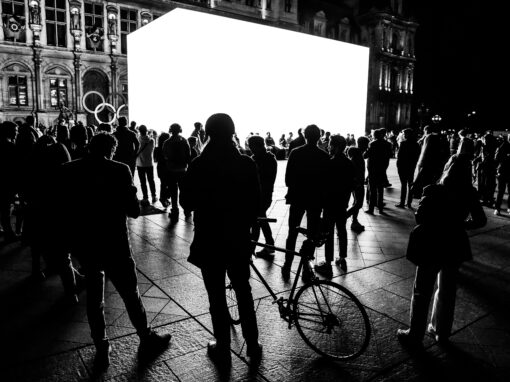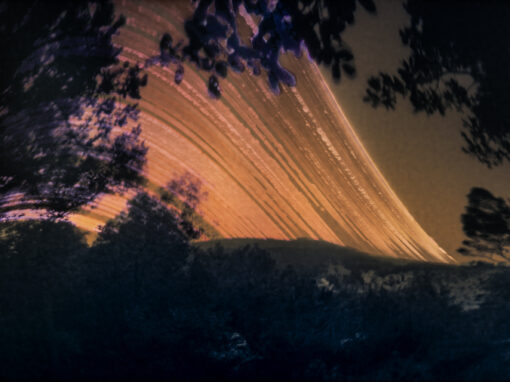For several years, I used to carry in my bag a small book titled Sauntering: Writer’s Walk Europe. Introduced and edited by Duncan Minshull, the book is an anthology of excerpts about walking, ranging from a paragraph to just a few pages. For me, it was a kind of day-book. I could bring it out at any time when I wanted to think about one of my favorite and sacred activities, which is simply taking a walk. It felt good to have this book with me.
Michael Collins – “Blind Corners: Essays on Photography”
Notting Hills Editions, 2025
US/Canada distribution: New York Review Books
Review by W. Scott Olsen

The book was produced by Notting Hill Editions, a UK publisher I believe understands more intimately than any other publisher on the planet the tactile pleasure of holding a book and reading. Barely the size of a mass market paperback, with a fantastic feel to the linen cloth cover, their books are comfortable and elegant at the same time. The typeface and page design favor the reader. They even have a ribbon bookmark to keep one’s place.
Sauntering was followed by Globetrotting: Writers Walk the World—the same idea made a bit larger than Europe, also edited by Minshull, and once again I found myself taking the book with me wherever I went. It filled both long and short moments with ideas and love.
I bring up these two books because I have today a new book from Notting Hill, equally pleasurable to hold in the hand, equally easy to put in my bag and carry with me no matter what I may be doing. This one is titled Blind Corners: Essays on Photography, by Michael Collins, and I am confident this one will be in my bag for a very long time.
Blind Corners is the kind of book where you settle in as the world you know is articulated, is given language. Think about that for a moment. There is a kind of reading experience where what you’re reading is original and fresh and completely new to you, and yet at the same time, while you’re reading, you think, “Wow. I didn’t know I knew that.”
The very best love poem would be an example of this. It gives shape and form to an emotion we hold in our hearts and in our souls, and the words, which we have never read in this order before, strike us as true. Yes, we think. That’s exactly how I feel. In other words, Yes, I didn’t know I knew that.
Blind Corners is a book I believe every photographer should own. Not just the pros. Not just the high end amateurs. But everybody who has ever raised a camera or a cell phone with the hope to create an image should at some point have this book, put it in their day bag and carry it with them.
I will admit, when I began this book yesterday, I was simply going to dip in. I was going on a reconnaissance trip to see what this book was all about. However, I then spent the next couple hours sitting in a comfortable chair at home, once again in an experience I have not had for a very long time, reading a book, cover to cover, in one sitting. And I could not have been happier.
Blind Corners is a collection of essays, interrelated in that they are all about photography. Some of them are historical. Some of them are unpackings of single images. They are all deeply informed, erudite and probing. And if I say the book gives shape and form to ideas many photographers have intuited, I mean that as a high compliment. It’s difficult to give specific and compelling language to an idea we all hold in our own style.
For example, in an essay called “Coronation Day, Tenby,” which is the unpacking of a single group portrait, Collins writes:
Photography’s apparent realism makes it the most accessible, understandable and credible of all the visual arts. People relate instinctively to photography. It has the uncontrived eloquence of directly recorded experience; that raw expression of humanity so potent in transcribed forms such as oral history, leaves fingerprints in the photograph’s, profusion of incidental detail. The voice and vernacular of oral history, the combination of the ostensibly important and superfluous, are what makes it so compellingly believable and informative. Photography takes this to an extreme degree because it has no filter; everything and anything is recorded indifferently. Incidental detail is the hallmark of photography. God is not in the details; everyday life is.
Yes, I thought. Exactly.
There are chapters in here that are firmly narrative, such as when Collins was involved in setting up a camera in a zoo so that chimpanzees and then gorillas were invited to take pictures of the people who came to look at them. (The experiment was not what one would have hoped.) There are essays about the history of portraiture; there are frequent references to the Camera Obscura. But the real genius of this book is twofold. When Collins is telling a story about an image, either one he took or one he discovered, the writing is compelling, straightforward, researched and informed, and has that sense of a quest behind it that drives the reading pleasurably. His historical contexts are deep.
Sometimes I found myself staring at the ceiling, deep in thought, even when simple ideas would go by. For example, in an essay titled “Photography’s Realism,” he writes:
Here lies the genie in photography’s camera; the ability to make an intensely detailed record instantaneously. But the speed and omnivorous nature of photography is also its undoing. The means to produce an image bristling with unforeseen detail is accompanied by a culture of haste and plentitude, the image receiving only glancing attention.
Yes, I thought. Exactly.
Personally, my favorite parts of this book are when Collins takes on the ideas of photography. His articulation of specific photographs is second to none. But then he writes:
To compose the photograph, an extraneous frame is placed on the vista, eliminating everything except what is featured on the rectangle of the ground glass. That rectangle becomes its own entirety, its edges, the borders to that world. However formally neat and pleasing, within that rectal rectangle lurks anarchy, for what is envisioned as a still print is a photograph of a dynamic scene overflowing with details. That landscape is a world in flux whose elements—light, water, air, mud—are in perpetual motion, with such superabundance they surpass our visual acuity. So, the composition will always be compromised, and as such, composed with the human touch.
Finally, (and yes, I’m quoting at length, because that is what this book deserves) he writes:
Photography is known as the art of fixing a shadow, but nothing is fixed, not least meaning. It’s wishful to look at photography for certainty, because the light in its exposure is an explosion of consciousness, rambling off script, garrulous and unfiltered, leaving a swath of complexities and contradictions in its wake. Photography is the medium of dialectics. Everyone sees something slightly (or significantly) different in the picture…Rather than clarifying, it complicates. Photography is a long-winded answer unrestrained by the question.
There are great many books of photography. There are a handful of really good books about photography. Blind Corners, a short book bound with the elegance of a Notting Hill Edition is one of those books that will strike deep. It gives language and examples to the complications and wonders and joy of what we do.
A note from FRAMES: Please let us know if you have an upcoming or recently published photography book.





Pingback